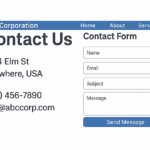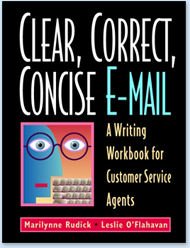![]() With the rise of SMS, chat, and social media, is using email for customer service as quaint as sending postal mail? “Tell us about the old days, Grandpa. Did you really have to lick an envelope to seal it?”
With the rise of SMS, chat, and social media, is using email for customer service as quaint as sending postal mail? “Tell us about the old days, Grandpa. Did you really have to lick an envelope to seal it?”
No, the customer service email channel is not the least bit quaint! It’s the workhorse of the contact center, usually right behind the telephone in the percentage of contacts handled and in customers’ channel preference. A 2018 Forrester research study found that email is still the most commonly used digital customer service channel, used by 54% of the customers surveyed. And in a recent Bizrate Insights study, 29.1% of US consumers (of all ages) preferred using email to contact support, and only 1.3% preferred using social media for the same purpose.
So, customers have been using email for years, they continue to use it, and they like email. But, over the years, their expectations about response time definitely have changed. There’s no question they expect a faster response than they did back in the day. Jeff Toister’s recent research found that 44% of consumers want an email response from a company in four hours or less. The old “We have received your email and will reply within three business days” standard is out the window.
How can contact centers improve their email response time? It’s not by increasing the email quota for individual agents. Contact centers can only improve response time when contact center managers choose the right people, knowledge management practices, workflow, and tools to enable faster-better email.
Nine tips for managers who want to improve their contact center’s email response time
People Tips
1. Hire people who like to write and are good at it. If you’ve been accustomed to moving agents from the phone to email, you may have created a team that doesn’t have very good writing skills. Make a long-term plan to recruit agents who can write. You can’t expect people who are just OK at writing to be able to do it more quickly. You simply need agents who have good writing skills. (Want some ideas on how to screen applicants for writing skills? Download this checklist: “Nine interview questions you must ask applicants about their writing skills.“)
2. Staff your email channel with people who can easily blend freetext with “canned” writing. If you’re trying to get your agents to answer customers’ emails quickly, it makes sense to use templates. But sending customers responses that are 100% canned is a bad idea. It destroys your brand reputation and creates more emails of the “Thanks for the form letter that didn’t even answer my question” variety. Instead, staff your channel with people who can freetext within a template or put the template aside altogether and freetext the entire response when necessary.
3. Hire people who have excellent analytical reading skills. Can your email agents read the customer’s email and understand the difference between what the customer is saying and what they’re asking? That’s analytical reading, and it’s an essential email skill.
Let’s consider this sample email from a customer, “Charlie.”
From: Charlie Barnstable
To: Help@WebCopyShop.com
Subject: Error message with online print order
I’ve been at https://WebCopyShop.com/SubmitDelivery, for 15 minutes trying to complete my online order! Here’s the error message: “Please correct the following error(s) to proceed. To continue, please select another delivery option.” I have tried to select all the delivery options but I keep getting the same error message. What’s going on??
Thanks,
Charlie
If the agent lacks analytical reading skills, he might skim through Charlie’s email quickly and notice Charlie is saying he’s having trouble placing an online order. The only question Charlie’s actually asked in his email is “What’s going on??” An agent who’s not good at analytical reading will write a reply to Charlie’s literal question, and that reply won’t be of much use, however quickly Charlie receives it.
But a close, analytical reading of Charlie’s email shows that he’s actually asking several questions:
- How do I place my order?
- Did I make a mistake or is your system broken?
- Did my order, in fact, go through?
An agent who uses analytical reading skills and writes a full response that answers Charlie’s implied questions is more efficient. The full response, delivered quickly, is far more likely to be the final response.
Knowledge Management Tips
4. Name your knowledgebase articles unambiguously. It’s the manager’s responsibility to enforce good KB article naming practices, so agents can easily find the KB article they need. These KB articles are too similar to be of use. They will make agents slow to find the information they need:
- Refund Policy – International Customers – Original
- Refund Policy – International Customers – Updated
- Refund Policy – International Customers – With Link to Form Version 2
5. Provide a library of useful, current email templates that make freetexting easy. The manager should ensure that the templates agents use in their email responses encourage writing that’s both fast and good. These templates should include:
- Placeholders. Agents simply swap in specific information such as model numbers or dates, etc.
- Prompts. Agents follow the prompt by freetexting. The prompt might be for an empathy statement or a summary of the steps the agent has taken to solve the problem.
- Whitespace. Templates that are composed of short paragraphs separated by whitespace are easier to customize than templates composed of longer paragraphs or big blocks of text.
Here’s a sample template used by an air conditioner manufacturer. This template includes a mix of placeholders and prompts. Its short paragraphs would make it easy to customize.
Dear [First name],
Thank you for contacting us about your [model number] window air conditioner. I’m sorry you’re having problems with it. Cleaning the air filter in your window unit monthly should clear up the [paraphrase the customer’s problem]. You can easily access the air filter by opening the front panel doors. Then remove the filter and clean it gently with warm water and drop or two of dish soap. Let the filter air dry completely before you reinstall it.
If the filter has tears or holes in it, please replace it. If your window unit has a foam filter, you can purchase replacement electrostatic filter material at [name of nearby retail outlet] and cut it to accommodate the exact size of your model.
These filters should be cleaned once per month during the cooling season. If you have [pets or allergies], consider cleaning it more frequently to remove hair, dander, and pollen…
Workflow Tips
6. Route incoming emails, so individual agents are answering emails that are all on the same topic. This workflow practice will enable agents to answer emails faster, so if speed is your top priority, you may want to consider it. Routing emails by topic has a well-known downside: it makes agents’ work boring and repetitive. Perhaps this tip is best used if there’s been a crisis and your team needs to clear a backlog?
7. Allow agents to focus on email. Avoid having agents split their attention by doing chats or phone calls between emails. While filling in any downtime between calls may seem efficient, it breaks agents’ focus and prohibits analytical reading or freetexting within templates. Efficient email writing requires focus.
Tool Tips
8. Equip agents with a spell-checker that actually works. To write quickly, and accurately, your agents need a spell-checker that (a) can be customized and (b) has an autocorrect function. If your agents use a non-customizable spell-checker, it will indicate that your product names are misspelled, even if your brand does actually sell knit caps it calls “Hatts.” And a spell-checker that also has an autocorrect function will catch and correct innocent but embarrassing keyboarding errors, by replacing “pucrhase” with “purchase,” for example.
9. Integrate a grammar checker like Grammarly. Most CRMs have less-than-helpful grammar checkers built in. If you want to help agents spend less time proofreading their emails (and help them write emails with fewer errors), give them a better grammar checker. Let Grammarly find-and fix-those comma errors!
— — — — — —
It’s pretty easy to pressure agents to respond to emails quickly, but poorly written email always begets more email. Managers will never improve their team’s email efficiency unless they support agents to write high-quality email … quickly.







I love your articles. I find your website to be valuable to both novice and professional writers. Thank you for enlightening us. Upon completing this article, I found bullet eight; sentence two, challenging to read and needs to be restructured.
Hello, Brenda – Sorry it’s taken me a while to respond to your comment. I took a look at the thorny sentence you mentioned it, and I edited it. Hope it’s better now! Thanks for being a careful and kind reader.